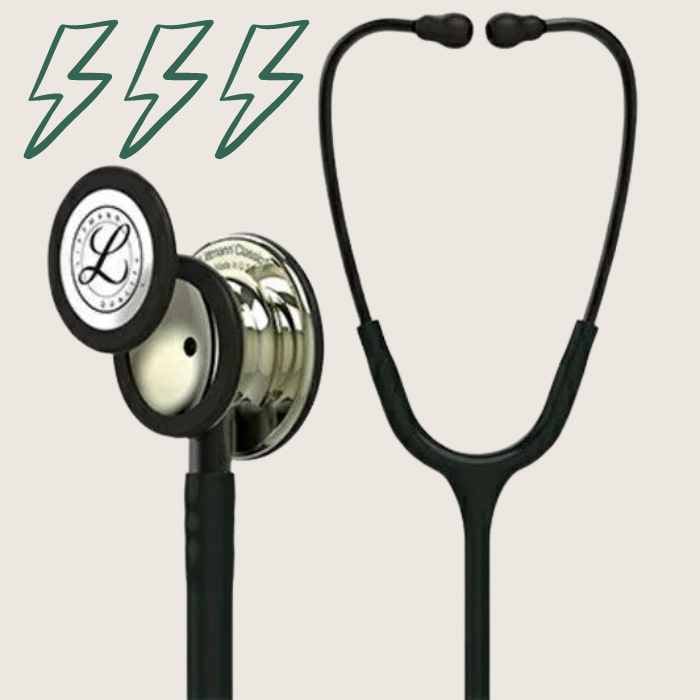Key Takeaways:
- Hearing loss affects millions of Americans, including healthcare works. Fortunately, medical professionals with hearing loss can use amplified stethoscopes to help them hear heart and lung sounds during evaluations.
- The main two categories of amplified stethoscopes include electronic and acoustic options.
- Another option are those that can be worn with hearing aids.

Millions of Americans with hearing loss are also medical professionals who need to hear heart and lung sounds during patient examinations. Unfortunately, hearing loss can make it more challenging when using a stethoscope to diagnose patients and listen to sounds from their heart, lungs, and other areas. Fortunately, there is a solution for this problem—utilizing an amplified stethoscope. Read on to learn how this device can help physicians and medical professionals with hearing loss.
Background
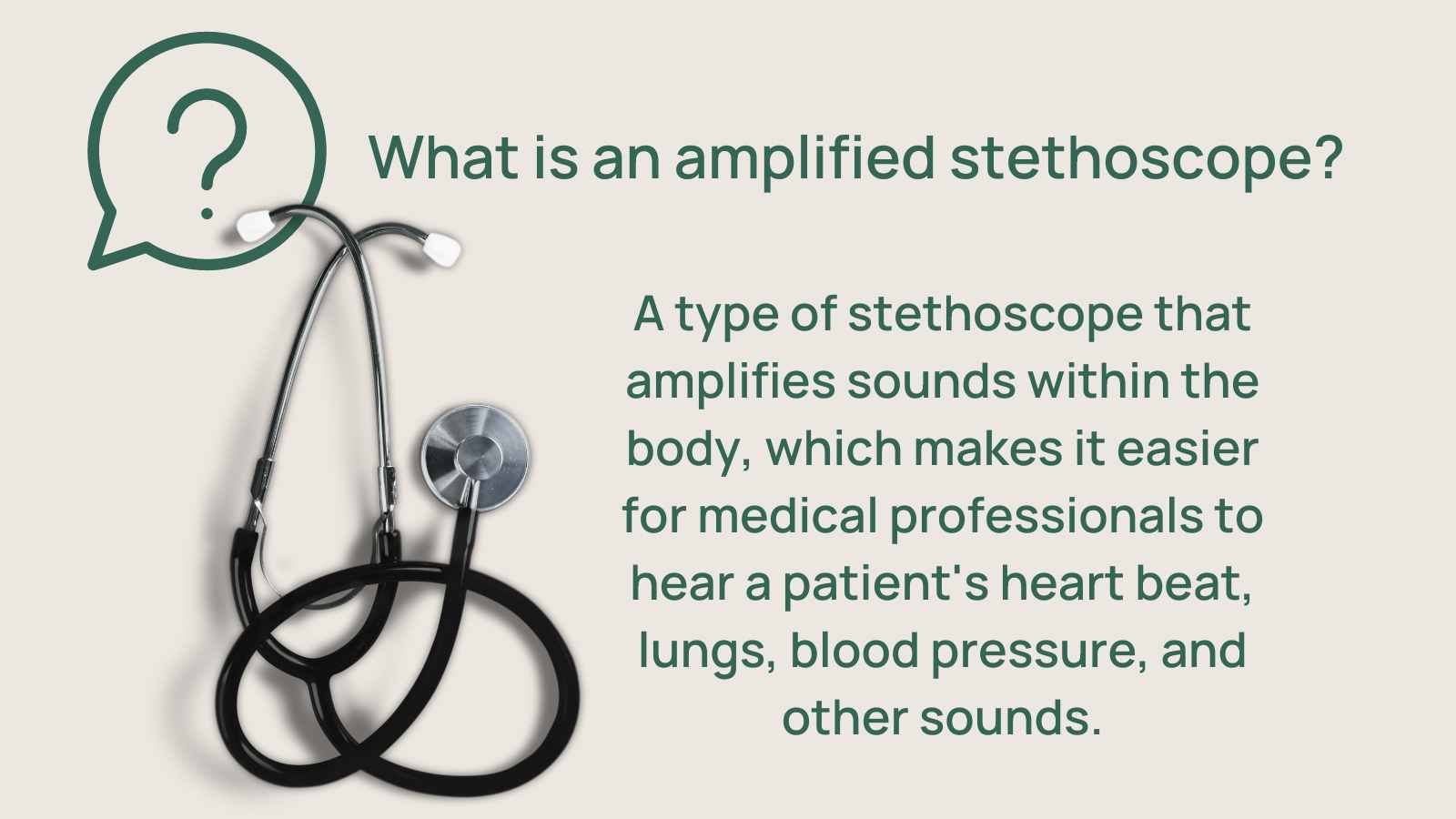
Medical professionals routinely use a stethoscope to listen to circulatory, respiratory, or other body sounds. Auscultation—the proper term for listening to body sounds—requires professional skill and audibility. However, hearing loss makes it harder to hear heart, lung, and other major organ sounds needed for differential diagnosis.
What are health professionals listening for?
Listening for breath and lung sounds range from 70 to 4000 Hz, with most sounds at 2000 Hz or lower. Critical lung sounds for diagnosis are concentrated in the low frequencies and fall between 200 to 600 Hz, and when listening to the heart, the most critical sounds occur at 70 to 120 Hz.
Can hearing aids amplify heart and lung sounds?

Most hearing aids amplify sounds at 250 Hz and above. That being said, frequencies as low as 70 Hz are important for differential diagnosis. What does this mean? A combination of occluding the ear, proper amplification of the target sounds, or a dedicated hearing aid program for using a stethoscope can help here.
For those with low-frequency hearing loss, an amplified stethoscope may be better than a device that works with your hearing aids. Additionally, medical professionals who don't use hearing aids will do best with an amplified stethoscope. Some professionals might also prefer to remove their hearing aids and use an amplified stethoscope.
Acoustic Versus Electronic Stethoscopes
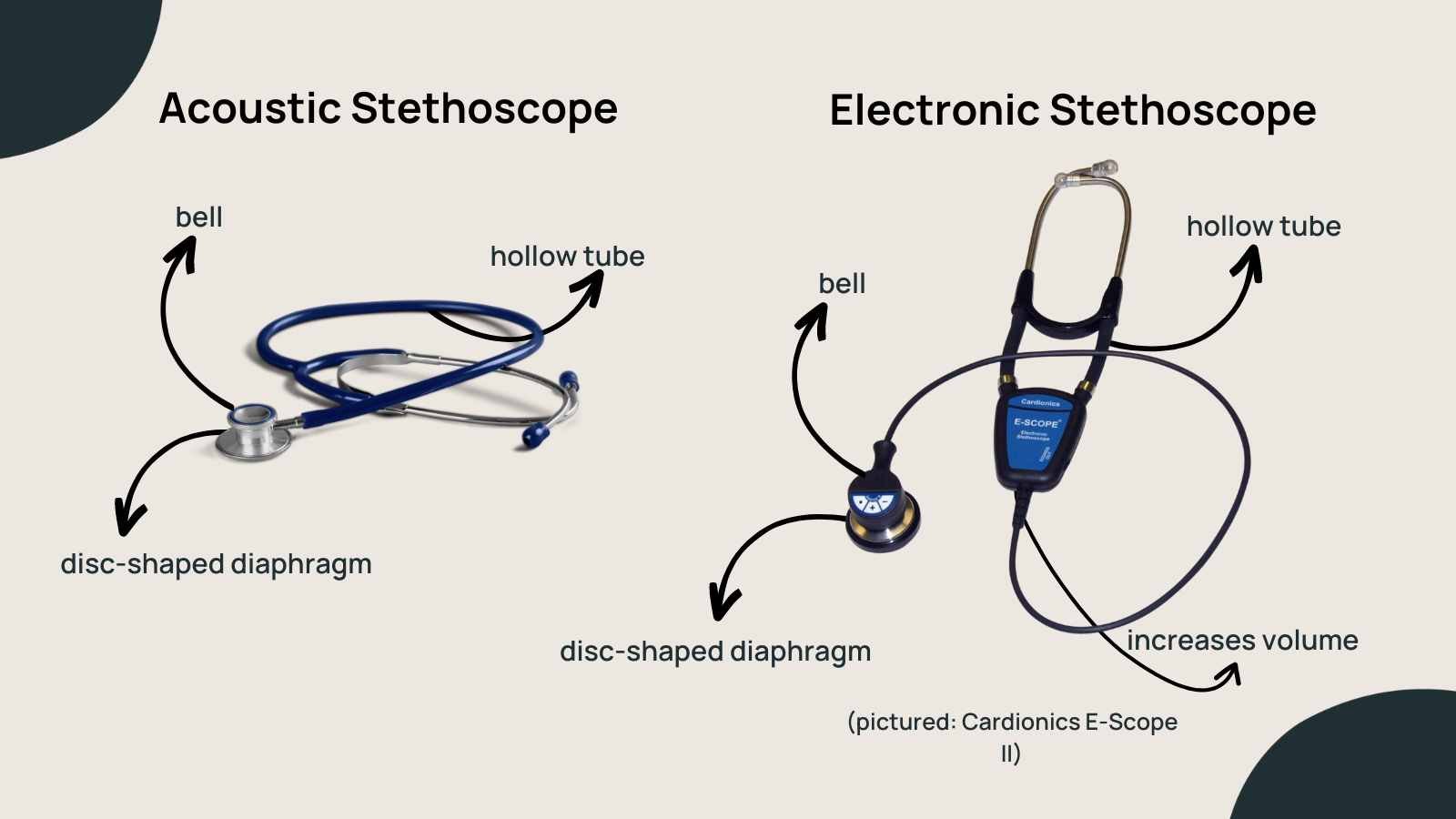
Two types of stethoscopes help health professionals with hearing loss: an acoustic stethoscope and an electronic stethoscope.
An acoustic stethoscope utilizes a hollow tube, a disc-shaped diaphragm, and a disc-shaped bowl called a bell to send the sound to the listener's ear. The diaphragm helps to pick up higher-pitched sounds like breath sounds, while the bell is designed to pick up lower-frequency sounds.
An electronic stethoscope amplifies the heart or lung sounds by increasing the volume to compensate for the hearing loss. One advantage of an electronic stethoscope is the option to use it with an app to record or visualize heart or lung sounds.
Best Electronic Amplified Stethoscopes
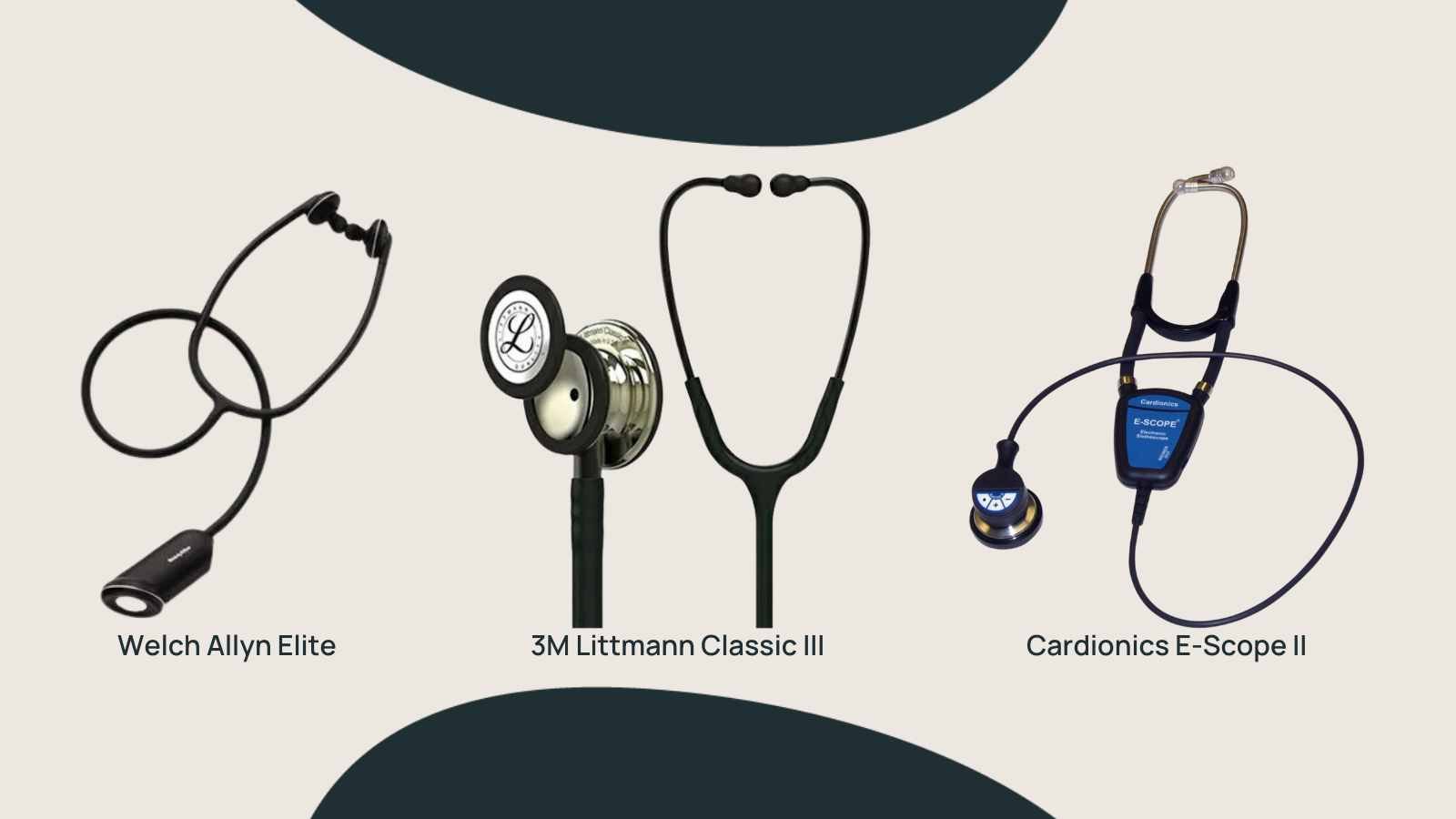
There are two main types of amplified stethoscopes available on the market today: amplified and adapted stethoscopes to be worn with hearing aids.
The amplified stethoscope is designed to pick up sound and increase the volume in the target frequency range, making it much more efficient than traditional models. These devices are louder than regular stethoscopes and can be up to 100 times louder.
Amplified stethoscope brands to consider:
1. 3M Littmann Classic III Stethoscope
The tunable diaphragm on this acoustic stethoscope works for pediatric and adult patients. The soft-sealing ear tips are comfortable and provide appropriate occlusions for the best audibility.
2. Welch Allyn Elite Electronic Stethoscope
The two-option switch allows you to focus on either low or high-frequency sounds to pick up target sounds for diagnosis. Optional accessories can also capture and record sounds.
3. Cardionics E-Scope II
This stethoscope amplifies body sounds while filtering out background noise.
Stethoscope Options with Hearing Aids
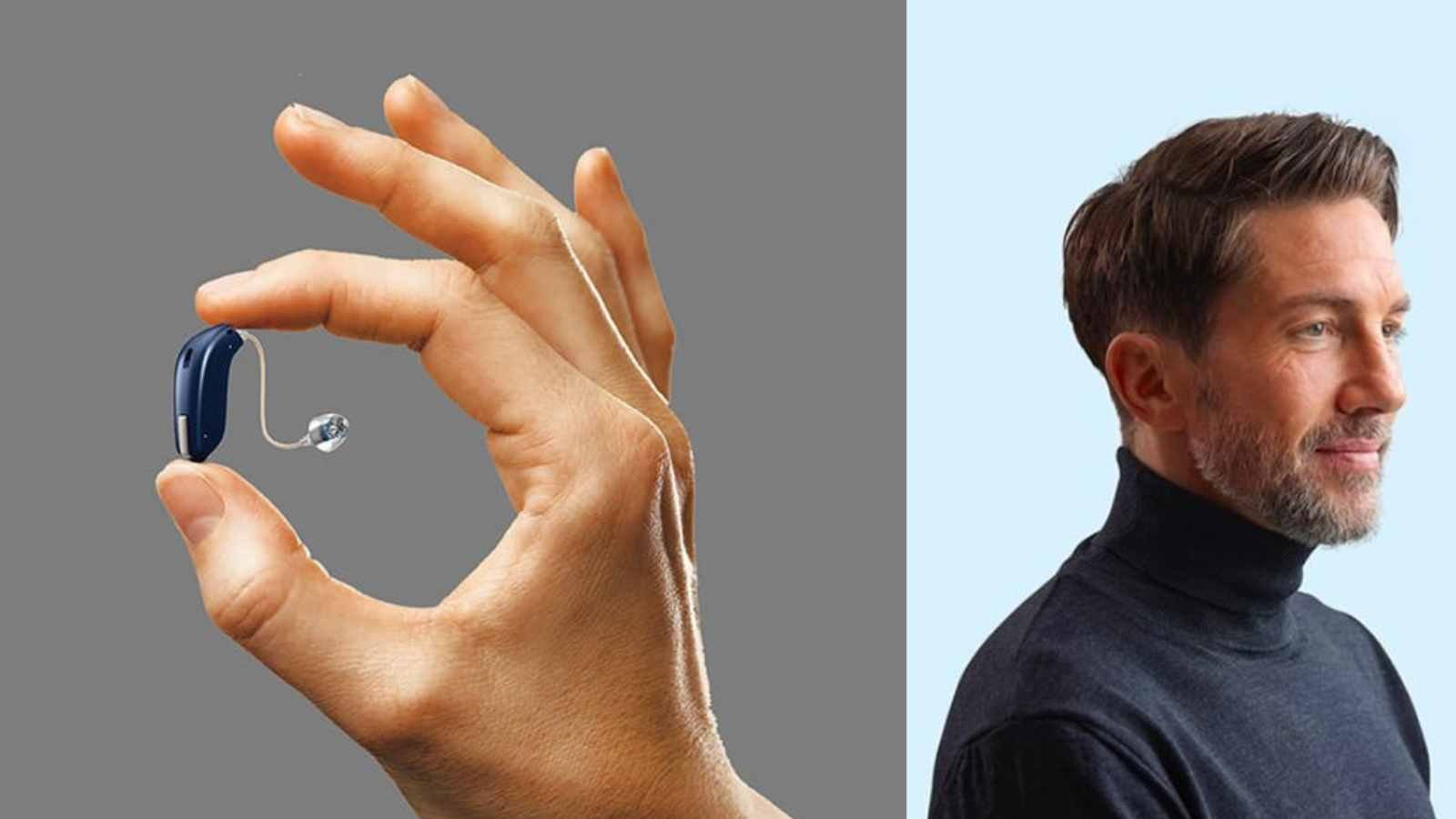
Another type of device is one that is adapted for use with hearing aids. These devices often connect wirelessly directly to your current hearing aids or can be worn with headphones over the hearing aids.
Options for BTE or RIC Hearing Aids
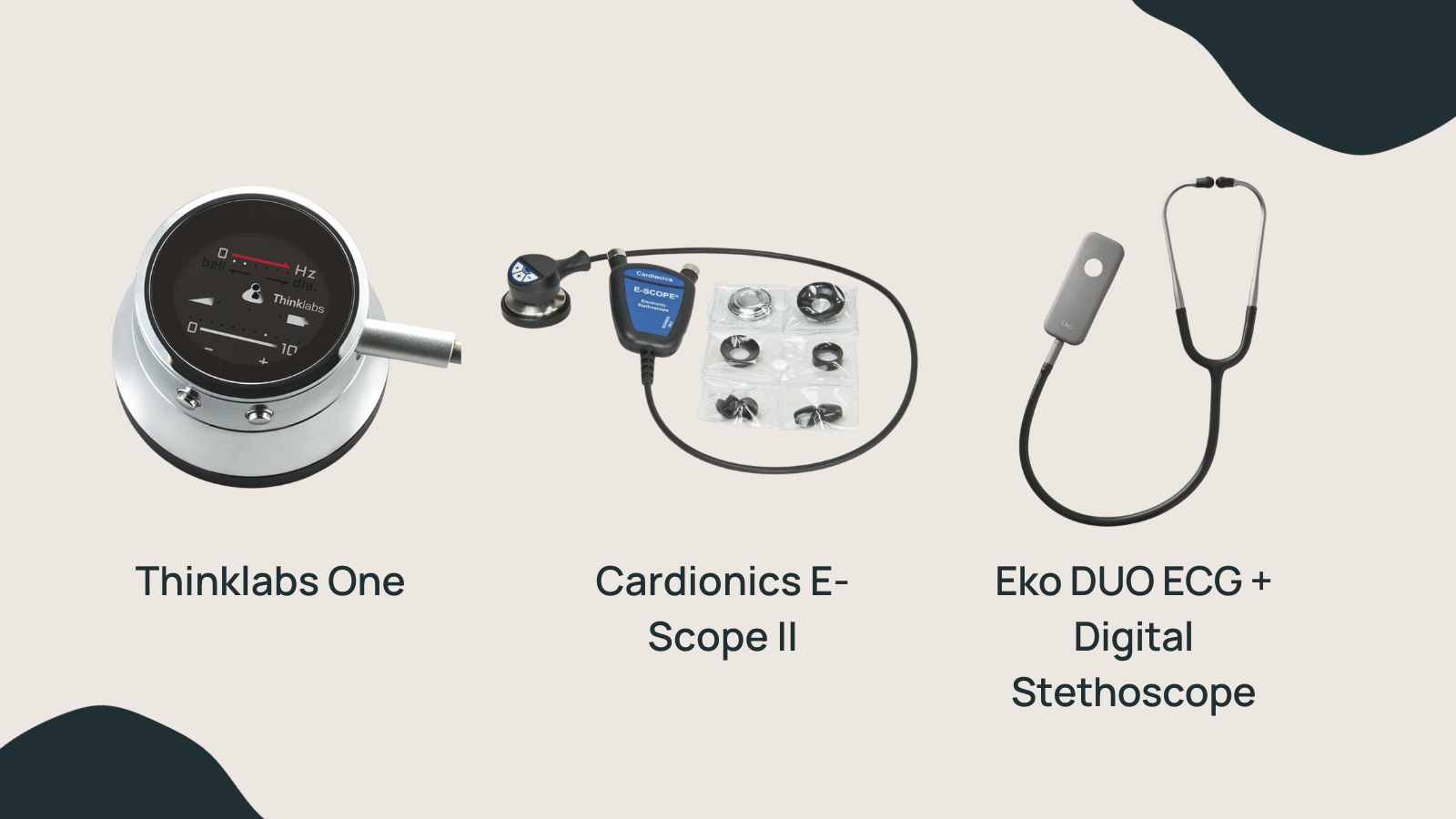
Several stethoscopes work for hearing aid wearers with over-the-ear headphones attached. Below are three good options:
1. ThinkLabs ONE
The ONE is the smallest and most powerful stethoscope, capable of amplifying up to 100 times. In addition, this device comes with insert earphones to place in the ear along with the hearing aids. If it is not possible to fit both the inserts and hearing aids in the ear, another option is to pair it with a high-quality pair of headphones. Options for compatible headphones include Beats Executive, SoundTru On-Ear Headphones by Bose, or Monster DNA.
2. Cardionics E-Scope II
Pair this stethoscope with headphones to wear over your hearing aids. The device reaches a maximum volume of 120 dBA.
3. Eko Duo ECG + Digital Stethoscope
The app that works with this stethoscope is great for creating recordings of heart and body sounds in the app. Also, many people find the detailed visualization of the waveform a helpful visual aid.
Options for Custom Hearing Aids
As a custom hearing aid occludes the ear, some find it provides enough volume for hearing low-frequency sounds needed for differential diagnosis. If you wear a custom hearing aid, you'll find Stethomate tips an excellent option to use in conjunction with your hearing aid. It’s so easy to implement and to use with a stethoscope, you'll remove the standard tip and attach the Stethomate tip.
Finding the Right Solution
If you have hearing loss and need an amplified stethoscope, it's worth discussing with your hearing care professional what they recommend. Some of my more tech-savvy patients love the Bluetooth and app options, while others prefer the more traditional acoustic amplified stethoscope. One key factor for best audibility is the coupling to the ear without triggering feedback from your hearing aids. Together with your hearing care professional, you'll find the best solution.
Conclusion
An amplified stethoscope can help medical professionals carry out their work comfortably. You can continue diagnosing patients effectively without sacrificing quality or accuracy with an amplified or adapted-for-hearing-aids stethoscope. Take time to research what products best suit your needs and find the best solution for you.



